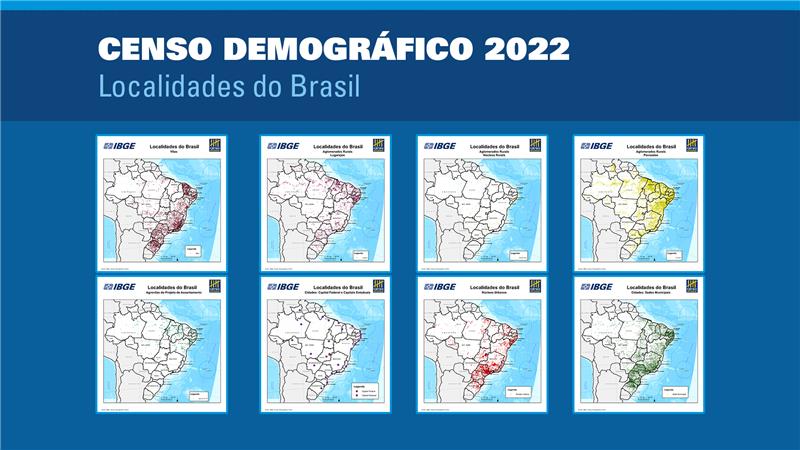Continuous PNAD
Unemployment increases in 16 Federation Units in Q1
May 18, 2023 09h00 AM | Last Updated: May 23, 2023 08h33 PM

The unemployment rate reached 8.8% in Q1, an increase observed in 16 Federation Units. In the other states, the rate remained stable. As for the same comparison, unemployment rose in all the Major Regions, mainly in the Northeast, where the rate increased by 1.4% p.p. and reached 12.2%. These data are from the Continuous National Household Sample Survey (Continuous PNAD), released today (18) by the IBGE.
According to the survey analyst, Alessandra Brito,the increase in unemployment and the simultaneous decrease of employment in Q1 resulted in a higher unemployment rate in Major Regions, as well as it occurred in the case of national result. “After a year of 2022 marked by recovery of the job market after the pandemic, in 2023, it seems that the seasonal movement of increase in unemployment in the beginning of the year is getting back to the same level as in the time series,” the analyst explains.
Historically, this increase takes place in the first few months of the year, and reflects, for example, the dismissal of temporary workers hired in the end of the previous year, and significant pressure on the labor market in the period.
In the first quarter of the year, the Northeast still keeps the highest unemployment rate among the Major Regions, whereas the South (5.0%) has the lowest one. Among the ten Federation Units with the highest percentages, seven are located in the Northeast. Among those, Bahia (14.4%) and Pernambuco (14.1%), with the highest rates in the country, stand out.
According to the analyst of the survey, that difference between the states results from informality. “Bahia and Pernambuco, as well as the entire Northest region, have a stronger presence on informal work (employment without a formal contract and self-employment without a CNPJ register), which makes insertion in the labor market more volatile, leading to pressure for finding a job. That is reflected in a higher unemployment rate, in compariso with the national rate,” Ms. Brito says. On the other hand, the lowest rates were registered by Rondônia (3.2%), Santa Catarina (3.8%) and Mato Grosso (4.5%).
All the states in the North and Northeast registered informality rates above the national average (39.0%). The highest percentages among those were those of Pará (59.6%), Amazonas (57.2%) and Maranhão (56.5%).
Ms. Brito explains that informal work has fewer guarantees relative to labor rights, besides being less stable. “This type of insertion makes the worker more susceptible to instability in the market, mainly at moments of crisis. Locations where informal work account for a bigger participation tend to have higher unemployment rate, for example.” The lowest informality rates were those of Santa Catarina (26.1%), Federal District (30.3%) and São Paulo (30.6%).
In the country, the number of employed persons reached 97.8 million in the first quarter, a decrease of 1.6% from Q4 2022, which represents a drop by 1.5 million persons in the labor market. In the 3rd quarter of 2015, the employed population comprised 68,6% of employees, 4.3% of employers, 25.8% of self-employed persons and 1.5% of contributing family workers.
In the North (31.2%) and in the Northeast (29.0%), the percentage of self-employed persons exceeed that of other Major Regions. Rondônia (37.3%) was the state that accounted for the biggest proportion of these professionals, follwed by Amazonas (32.5%) and Amapá (32.3%). The lowest proportions were in the Federal District (20.7%), Tocantins (21.3%) and Mato Grosso do Sul (22.3%).
Against the previous quarter, average earnings increase ionly in the Northeast
The average usual real earnings reached R$ 2,880, standing stable in the comaprison with the previous quarter. Among the Major Regions, the Northeast (R$1.979) was the only one to record an increase in this type of earnings, whereas the others remained stable. In spite of that, it keeps the lowest average earnings.
The wagebill, sum of gross earnings received by all the employed persons, also remained stable in the quarter and was estimated at R$ 277.2 billion. In comparison with the firt quarter a year ago (R$ 250.2 billion), this indicator recorded increase.
Unemployment is higher among women and black and brown persons with incomplete high school education
The survey also shows that unemployment rates remain higher for women, black and bown persons and those who do not have a high school degree. All these groups were above the national average (8.8%). In the fourth quarter, this rate was estimated at 7.2% for men and at 10.8% for women. This difference was observed in all the Major Regions.
Considering the unemployment rate by color or race, persons who declared to be white (6.8%) were below the national average, whereas black ones (11.3%) and brown ones (10.1%) were above. In Q1 2012, start of the survey’s time series, the average rate was estimated at 8.0%, and, by color or race, there were the following percentages: black persons, corresponding to 9.7%; brown ones, to 9.2% and white ones, to 6.7%.
“The highest unemployment rate among women and black or brown persons is a standard in Brazil, reflected in this survey. These populations are also underrepresented in informl work, in comparison with men and white persons,” the analyst says.
Regarding the analysis by level of schooling, the unemployment rate for persons with incomplete high school reached 15.2%. For those who do not have a higher education degree, the rate waa estimated at 9.2%, more than twice as that observed for those that finished higher education (4.5%).
More about the survey
The Continuous PNAD is the main instrument to monitor workforce in Brazil. The survey sample per quarter corresponds to 211 thousand households surveyed in Brazil. Nearly two thousand interviewers work in the survey in 26 states and in the Federal District, integrated to the data collection network of more than 500 IBGE branches.
Due to the Covid-19 pandemic, the IBGE implemented data collection by telephone on March 17, 2020. In July 2021, face-to-face data collection was resumed. The identity of the interviewers can be confirmed at the Answering the IBGE website or through the Call Center (0800 7218181), and their ID numbers can be requested by the informants. PNAD data area available for consultation at Sidra and at Sidra and at the Interactive Panel..


















